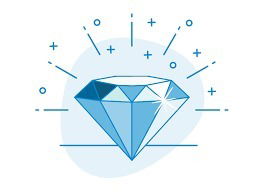Athletic Pain Relief: Understanding Professional and Self-Care Options
Physical activity often creates unique demands on the body, sometimes resulting in discomfort requiring professional attention. Understanding available treatment approaches helps active individuals make informed decisions about their healthcare needs for optimal recovery and continued performance.
I. Exploring Practitioner Qualifications and Treatment Approaches
When seeking care for activity-related discomfort, many patients inquire about provider credentials. Are chiropractors doctors? These practitioners complete extensive doctoral-level education focused specifically on neuromusculoskeletal conditions rather than general medicine. This specialized training prepares them to address sports-related injuries through comprehensive assessment and targeted intervention strategies.
Biomechanical Factors in Athletic Pain Development
Sports participation creates distinctive stresses on body structures through impacts, repetitive motions, and sustained positions. Technical errors in activities like swimming or weightlifting frequently establish uneven loading patterns leading to tissue irritation over time. Professional evaluation identifies these subtle contributors that conventional assessments might overlook.
When examining neck discomfort in athletes, movement habits during training significantly influence cervical health. The relationship between posture, movement quality, and tissue loading helps active individuals recognize when professional intervention becomes necessary for proper recovery and continued participation.
II. Comprehensive Care for Athletic Conditions
Chiropractic treatment for neck pain provides athletes with specialized care addressing both symptoms and underlying causes. Modern chiropractic approaches integrate spinal adjustments with soft tissue techniques, rehabilitation exercises, and movement pattern correction for more comprehensive results.
Similar principles guide chiropractic treatment for back pain, focusing on thorough biomechanical assessment before implementing targeted interventions. Effective care combines various techniques based on individual findings, creating complementary effects addressing different aspects of dysfunction simultaneously.
Therapeutic Massage for Performance Recovery
Within Singapore's active community, sports massage Singapore specialists deliver valuable complementary care for athletic conditions. These therapeutic interventions address muscular components of pain while enhancing circulation and supporting tissue recovery between training sessions.

Unlike general relaxation massage, sports-focused techniques employ specific approaches based on tissue condition and recovery phase. From methods addressing chronic adhesions to techniques reducing acute inflammation, similar with chiropractic treatment for back pain enhance healing processes when appropriately applied.
III. Finding Quality Care Resources
When seeking relief from activity-related discomfort, connecting with experienced chiropractor Singapore practitioners familiar with athletic injuries improves treatment outcomes. Qualified providers conduct thorough assessments identifying specific dysfunction patterns requiring targeted intervention rather than generic approaches.
Provider selection involves evaluating training background, experience with athletic populations, and approach to patient education. Practitioners integrating current evidence with clinical expertise typically deliver more effective outcomes compared to those relying solely on passive interventions.
Self-Management Strategies for Joint Pain
Home-based approaches frequently complement professional care for various conditions. Knee pain treatment at home might include controlled mobility exercises, appropriate activity modification, and progressive strengthening—principles paralleling those used for spinal rehabilitation. Similarly, tailbone pain exercises focus on pressure management and graduated mobility training.
When addressing knee discomfort, many explore knee pain home remedies or natural remedies for knee pain in old age for symptomatic management. Effective approaches generally combine appropriate movement patterns, tissue quality improvement, and functional stability—principles applicable across multiple body regions.
Home remedies for knee pain often incorporate gentle mobility work, controlled strengthening, and activity modification. For consistent results, knee pain remedy approaches require regular application within appropriate intensity parameters, similar to rehabilitation protocols for other regions.
By understanding available options and seeking qualified care, active individuals create favorable conditions for resolving current issues while preventing future recurrence. This comprehensive approach supports continued participation in valued activities while maintaining long-term neuromusculoskeletal health.

